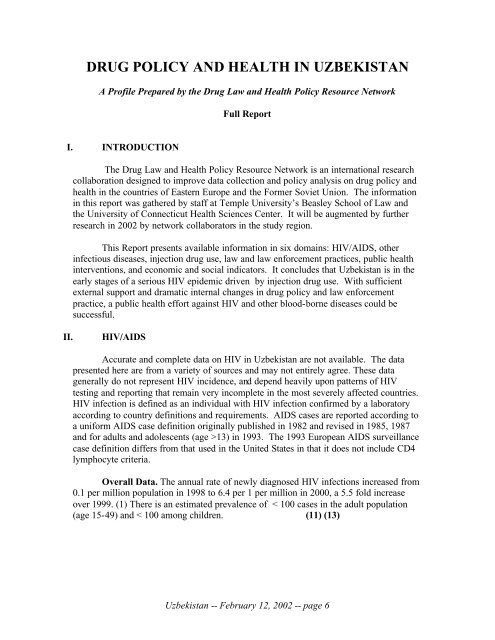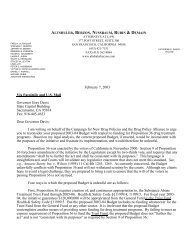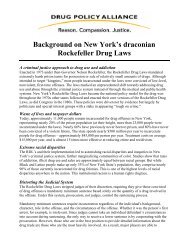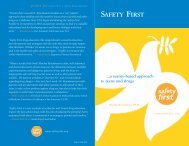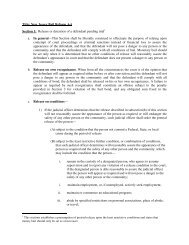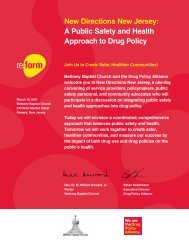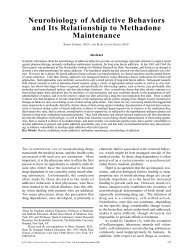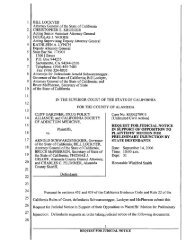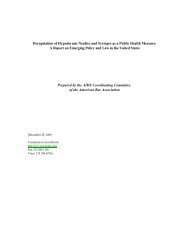Drug Policy and Health In Uzbekistan - Drug Policy Alliance
Drug Policy and Health In Uzbekistan - Drug Policy Alliance
Drug Policy and Health In Uzbekistan - Drug Policy Alliance
You also want an ePaper? Increase the reach of your titles
YUMPU automatically turns print PDFs into web optimized ePapers that Google loves.
DRUG POLICY AND HEALTH IN UZBEKISTAN<br />
A Profile Prepared by the <strong>Drug</strong> Law <strong>and</strong> <strong>Health</strong> <strong>Policy</strong> Resource Network<br />
Full Report<br />
I. INTRODUCTION<br />
The <strong>Drug</strong> Law <strong>and</strong> <strong>Health</strong> <strong>Policy</strong> Resource Network is an international research<br />
collaboration designed to improve data collection <strong>and</strong> policy analysis on drug policy <strong>and</strong><br />
health in the countries of Eastern Europe <strong>and</strong> the Former Soviet Union. The information<br />
in this report was gathered by staff at Temple University’s Beasley School of Law <strong>and</strong><br />
the University of Connecticut <strong>Health</strong> Sciences Center. It will be augmented by further<br />
research in 2002 by network collaborators in the study region.<br />
This Report presents available information in six domains: HIV/AIDS, other<br />
infectious diseases, injection drug use, law <strong>and</strong> law enforcement practices, public health<br />
interventions, <strong>and</strong> economic <strong>and</strong> social indicators. It concludes that <strong>Uzbekistan</strong> is in the<br />
early stages of a serious HIV epidemic driven by injection drug use. With sufficient<br />
external support <strong>and</strong> dramatic internal changes in drug policy <strong>and</strong> law enforcement<br />
practice, a public health effort against HIV <strong>and</strong> other blood-borne diseases could be<br />
successful.<br />
II.<br />
HIV/AIDS<br />
Accurate <strong>and</strong> complete data on HIV in <strong>Uzbekistan</strong> are not available. The data<br />
presented here are from a variety of sources <strong>and</strong> may not entirely agree. These data<br />
generally do not represent HIV incidence, <strong>and</strong> depend heavily upon patterns of HIV<br />
testing <strong>and</strong> reporting that remain very incomplete in the most severely affected countries.<br />
HIV infection is defined as an individual with HIV infection confirmed by a laboratory<br />
according to country definitions <strong>and</strong> requirements. AIDS cases are reported according to<br />
a uniform AIDS case definition originally published in 1982 <strong>and</strong> revised in 1985, 1987<br />
<strong>and</strong> for adults <strong>and</strong> adolescents (age >13) in 1993. The 1993 European AIDS surveillance<br />
case definition differs from that used in the United States in that it does not include CD4<br />
lymphocyte criteria.<br />
Overall Data. The annual rate of newly diagnosed HIV infections increased from<br />
0.1 per million population in 1998 to 6.4 per 1 per million in 2000, a 5.5 fold increase<br />
over 1999. (1) There is an estimated prevalence of < 100 cases in the adult population<br />
(age 15-49) <strong>and</strong> < 100 among children. (11) (13)<br />
<strong>Uzbekistan</strong> -- February 12, 2002 -- page 6


